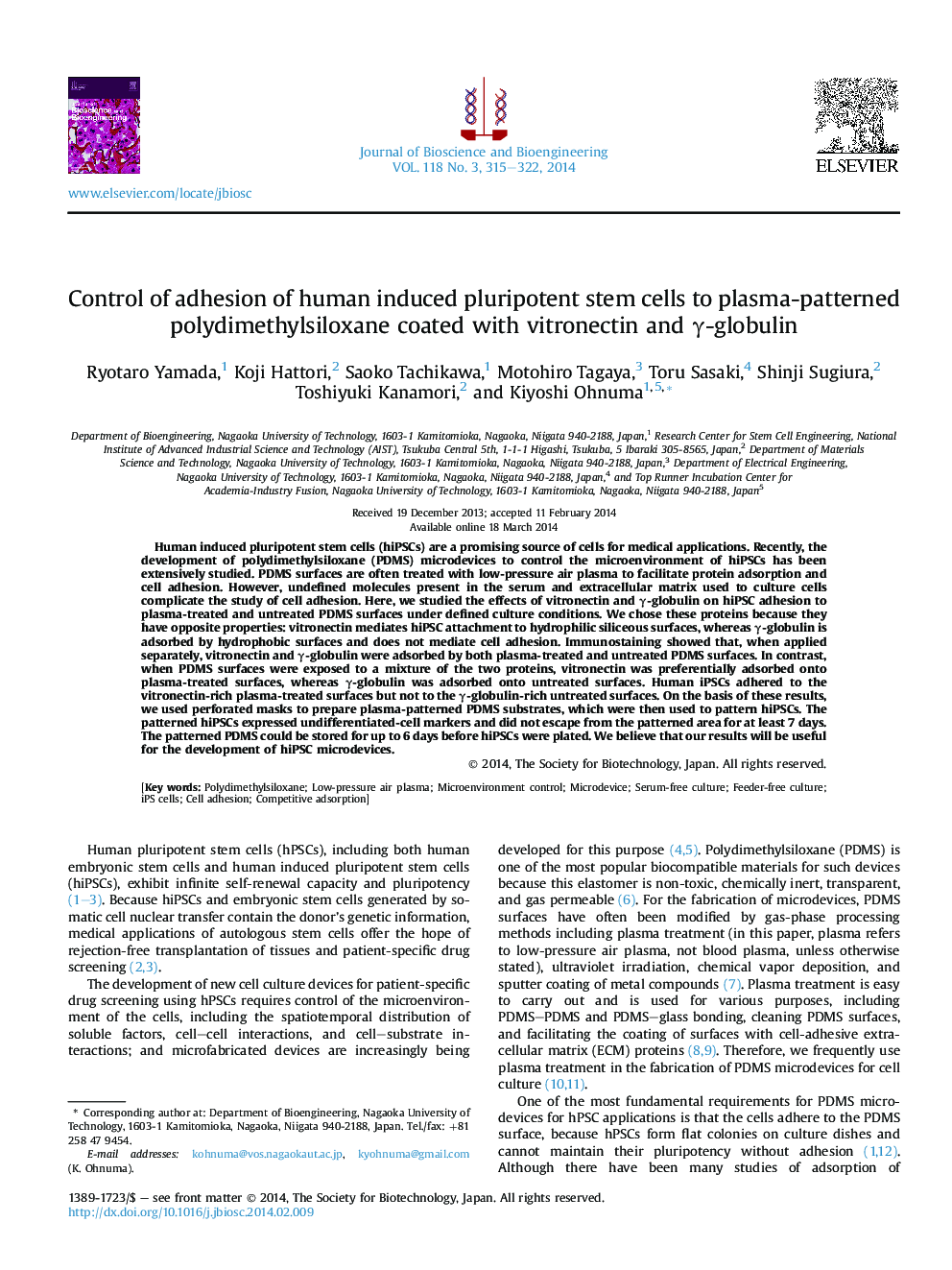| کد مقاله | کد نشریه | سال انتشار | مقاله انگلیسی | نسخه تمام متن |
|---|---|---|---|---|
| 20455 | 43175 | 2014 | 8 صفحه PDF | دانلود رایگان |

Human induced pluripotent stem cells (hiPSCs) are a promising source of cells for medical applications. Recently, the development of polydimethylsiloxane (PDMS) microdevices to control the microenvironment of hiPSCs has been extensively studied. PDMS surfaces are often treated with low-pressure air plasma to facilitate protein adsorption and cell adhesion. However, undefined molecules present in the serum and extracellular matrix used to culture cells complicate the study of cell adhesion. Here, we studied the effects of vitronectin and γ-globulin on hiPSC adhesion to plasma-treated and untreated PDMS surfaces under defined culture conditions. We chose these proteins because they have opposite properties: vitronectin mediates hiPSC attachment to hydrophilic siliceous surfaces, whereas γ-globulin is adsorbed by hydrophobic surfaces and does not mediate cell adhesion. Immunostaining showed that, when applied separately, vitronectin and γ-globulin were adsorbed by both plasma-treated and untreated PDMS surfaces. In contrast, when PDMS surfaces were exposed to a mixture of the two proteins, vitronectin was preferentially adsorbed onto plasma-treated surfaces, whereas γ-globulin was adsorbed onto untreated surfaces. Human iPSCs adhered to the vitronectin-rich plasma-treated surfaces but not to the γ-globulin-rich untreated surfaces. On the basis of these results, we used perforated masks to prepare plasma-patterned PDMS substrates, which were then used to pattern hiPSCs. The patterned hiPSCs expressed undifferentiated-cell markers and did not escape from the patterned area for at least 7 days. The patterned PDMS could be stored for up to 6 days before hiPSCs were plated. We believe that our results will be useful for the development of hiPSC microdevices.
Journal: Journal of Bioscience and Bioengineering - Volume 118, Issue 3, September 2014, Pages 315–322